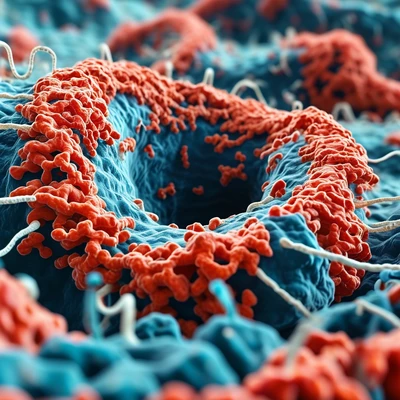Aging-related diseases such as cancer, cardiovascular issues and type 2 diabetes are connected to deficiencies in protein synthesis and folding.
Research has previously demonstrated that misfolding of proteins occurs in the insulin-producing beta cells found in pancreatic islets of individuals with type 2 diabetes.
The stress resulting from this was mainly thought to occur in the endoplasmic reticulum, which produces and distributes proteins within the cell.
Ultimately, this stress leads to cell death.
A study published in Nature Metabolism by researchers at the University of Michigan revealed that misfolded proteins also accumulate in mitochondria, contributing to beta-cell death.
Nature MetabolismReversing this process could potentially aid in treating type 2 diabetes.
Earlier research observed that insulin and amylin frequently misfold in patients with type 2 diabetes, both of which are produced by the pancreas's beta cells.
Amylin promotes satiety after meals, while insulin helps lower blood sugar by assisting cells in absorbing glucose.
In diabetic beta-cells, amylin can form amyloid aggregates similar to those found in Alzheimer's disease brain plaques.
"These proteins were previously the only focus in studies of diabetic islet cells," said Scott Soleimanpour, M.D., Larry Soderquist Professor of Diabetes Research and director of the Michigan Diabetes Research Center.
"We aimed for an unbiased approach to identify all misfolded proteins within these cells."
By analyzing genes and proteins in both healthy and diabetic beta-cells, researchers discovered that defense mechanisms responding to misfolded mitochondrial proteins do not activate during type 2 diabetes.
Specifically, LONP1 protein, responsible for removing damaged or misfolded proteins, was found to be reduced in cells from diabetic donors.
"Although LONP1 has links to rare mitochondrial diseases, this is the first study indicating its role in type 2 diabetes," Soleimanpour commented.
The team validated their findings by comparing LONP1-enabled mice with those lacking it. Mice without LONP1 exhibited higher glucose levels and fewer beta cells.
Restoring LONP1 reversed these defects, suggesting that targeting this system could open new treatment avenues for type 2 diabetes.
"Individuals with type 2 diabetes evidently struggle with misfolded protein elimination," Soleimanpour stated.
The next goal is to find drugs helping refold or eliminate these proteins.
The researchers are also intrigued by understanding the development timeline of type 2 diabetes, which often manifests in adulthood. Soleimanpour hypothesizes that misfolded proteins might accumulate over time, eventually overwhelming beta cells and leading to disease onset.
Early intervention, therefore, could be crucial.
Additional authors: Jin Li, Yamei Deng, Marie Gasser, Jie Zhu, Emma C. Reck, Emily M. Walker, Vaibhav Sidarala, Dre L Hubers, Mabelle B. Pasmooij, Chun Shik Shin, Khushdeep Bandesh, Eftyhmios Motakis, Siddhi Nargund, Romy Kursawe, Venkatesha Basrur, Alexey I. Nesvizhskii, Michael L. Stitzel, David C. Chan, and Guy A. Rutter.


